koko: macOS (Panther to Sierra), apps and more
“Genghis Khan and his brother Don
Could not keep on keepin’ on”
(1971) “You Ain’t Goin’ Nowhere” – Bob Dylan
Advising Don’t drop your iBook, and subsequently reporting repairs and repurposing (but not eventual abandonment), I only hinted at my negative over-reaction to Apple as a result of those iBook experiences. But I also knew I had to keep up with what Apple was doing, and that would mean hands on experience.
Besides the iBook, I had a Power Mac G4 that a client gave me to port software to OS X Server. I ported the software to Panther and Tiger and still have the machine.
It isn’t close to meeting the Leopard 867MHz processor requirement, but I’ve still found it useful from time to time.
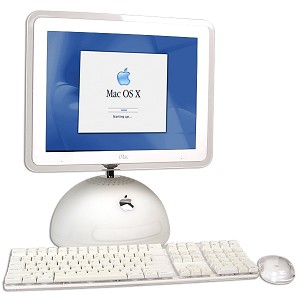
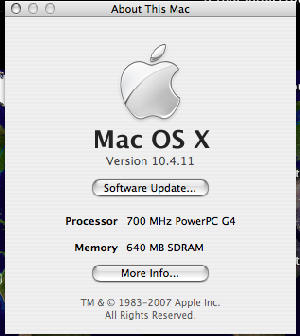 About the time the iBook was finally becoming unusable even with external I/O, a friend offered me his mother’s iMac G4 that she no longer used. I put the iMac on my office desk, enjoying the industrial design even if it is usually powered off.
About the time the iBook was finally becoming unusable even with external I/O, a friend offered me his mother’s iMac G4 that she no longer used. I put the iMac on my office desk, enjoying the industrial design even if it is usually powered off.
As with the Power Mac, it doesn’t meet the Leopard requirements, but I’ve found it useful, especially when advising friends still trying to use old Macs.
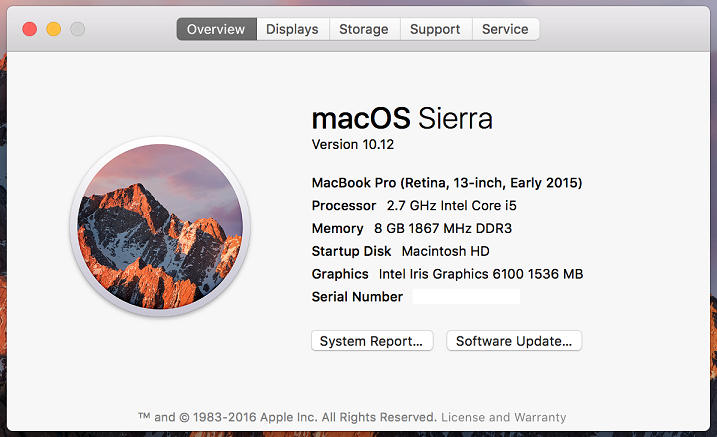 As those machines aged and I helped others with newer Macs, it seemed inevitable that I would buy another new one, but I kept procrastinating, sometimes thinking about a new Mac mini, but mostly assuming I’d get a MacBook of some kind sooner or later. My primary laptop, a Dell Vostro 3400 deteriorated significantly last year, overheating, (a fan) becoming noisy, and turned out to not be upgradable to Windows 10.
As those machines aged and I helped others with newer Macs, it seemed inevitable that I would buy another new one, but I kept procrastinating, sometimes thinking about a new Mac mini, but mostly assuming I’d get a MacBook of some kind sooner or later. My primary laptop, a Dell Vostro 3400 deteriorated significantly last year, overheating, (a fan) becoming noisy, and turned out to not be upgradable to Windows 10.
In December, when my wife said she wanted me to get a new machine for my Christmas present, I quickly narrowed consideration to the MacBook (Retina) and 13″ MacBook Pro (Retina). Even assuming USB-C is going to become dominant, it was hard to imagine being satisfied with the single port of the MacBook. More ports, faster processor and slightly larger screen seemed a good trade-off against increased thickness and weight. I’ve never serious regretted choosing the 13″ Pro. Subjectively, it feels easy to carry, enough so that I usually carry it when I could be taking my iPad mini.
My most controversial choice was to get only 128GB of storage when friends told of happiness with 1TB configurations. It was part frugality — I don’t think I’d spent that much on a computer for myself since the 20th century. It was part thinking that 128GB would be enough for me for many years, based on how I’ve been using conventional disks and expect to use network storage. It was part thinking that I’d be happy adding storage via SD cards. 9 months later, I still have about 83GB free, so I’m expecting 128GB to be enough internal storage. I typically have a 128GB SD card either in the machine or in my watch pocket, but so far I’m only using 50GB of that, allocated to a VirtualBox VM running Windows (now 10 Version 1407, formerly 10 Version 1511 and 7 before that). Even there the 50GB partition has more than 20GB free space.
I also wondered if I would regret not waiting for Apple to release an updated model. Though an update has long been anticipated, and may be imminent, as of today, Apple hasn’t done so.
Except for the Windows VM, and Office 2000(!) in that VM, so far I’ve not installed any purchased software. I wasn’t expecting I would need much, if any newly purchased apps. I assumed that Apple bundled apps plus free software would meet my needs.
More observations:
- Apple ID, 2X authentication & Windows shares
Things got off to a rocky start because of what I thought of as “two factor” authentication but now recognize that Apple refers to it as “two stage” and seemingly deprecates in favor of a newer “two factor” authentication. Either way, I’d previously accepted Apple’s encouragement to enable two stage on my iPad for my Apple ID. Initial setup of the MacBook seemed stuck in a loop, always requesting that I reset my password, until I gave up on two stage and turned it off. Subsequently, when I was having difficulty accessing Windows shares, and Apple Support seemed confused, a second level rep finally figured out that I couldn’t login with Apple ID and be able to access Windows shares. So now I use a traditional account. - Finder
I found Finder frustrating on the first Mac I bought, a Performa running OS 7. Almost a quarter century later, it doesn’t seem much better to me. - LibreOffice, Pages, Excel
I expected I’d use LibreOffice and/or Pages/Numbers/Keynote instead of Microsoft Office. That has mostly been true for Word documents. That probably will be true for all documents I create on the Mac. But some of my Excel spreadsheets that I’ve maintained over the years aren’t compatible with LibreOffice or Numbers, so I still use Excel from Office 2000, either in the local Windows VM or through remote access to a Windows physical machine. - Parallels, Fusion, VirtualBox
Boot Camp seemed too cumbersome to consider — if I wanted a Windows machine, I would have bought one. The Windows/macOS fluid integration with Parallels and Fusion makes me curious, but it is hard to imagine I would use it for anything, except, perhaps, Excel. I mostly think of Windows on this machine as a safety valve, which I haven’t really needed. So far, VirtualBox seems all I need or want. In principle I could have better integration between Windows and macOS via VirtualBox, but this hasn’t been important enough to figure out whether/how to make it work. Before the purchase, I thought I might want a Linux VM, but so far macOS as UNIX is fine for me, even as it drifts away from traditional UNIX. - Apple Mail, Thunderbird, Live Mail
Some of my bigger frustrations with Panther & Tiger revolved around relatively primitive IMAP support in Apple Mail, compared to what I was then used to with Netscape Mail and Outlook Express. Apple Mail in Yosemite, El Capitan and Sierra seems much better, but I still find Apple Mail less efficient for my mail handling than Thunderbird or Live Mail. If there were more commitment to the future of Thunderbird, I might switch to using Thunderbird across platforms. Absent that, I use Apple Mail and Live Mail[1]. - Screen Sharing, TightVNC, UltraVNC, RDP
I’ve used VNC for remote access to Windows, Linux and Mac OS machines since the last century. I use VNC daily and sometimes extensively. When I was seriously using Panther and Tiger, there were good free VNC servers, but the clients seemed overpriced and I never used them myself, though I did get a client to purchase a client so that he could access one my Windows machines from his Mac. With recent macOS, Apple includes a pretty good basic VNC client, “Screen Sharing”, and a very good VNC server as “Apple Remote Desktop”. Screen Sharing doesn’t feel as responsive as the better clients on Windows, e.g., TightVNC and UltraVNC, and omits refresh options and other useful features. (Reportedly, there are plans for UltraVNC for macOS. There is a Java version of TightVNC that will run on macOS, but overall doesn’t seem as responsive as Screen Sharing.)
Though I’m frustrated by the limitations of Screen Sharing, Microsoft’s Remote Desktop Protocol client for macOS seems as good or better than the Windows versions, and provides a useful alternative for remote access to Windows machines that allow RDP access. - Audacity, Cubase, GarageBand
I’ve got Audacity installed, but don’t think I’ve used it, tend to do audio stuff on the Windows desktop nearest to my best sound gear. I was thinking that I would try my Alesis iO|14 and iO|26 with the MacBook, but had trouble installing the drivers until learning to turn off “System Integrity Protection“. By then both iO|14 and iO|26 developed hardware problems and I replaced with a TASCAM US-16×08. In principle it should work well with the MacBook, but I haven’t tried those together yet. In principle, Cubase LE 4.5 that came with the iO|14 and iO|26 should work on macOS, but so far I haven’t gotten the licensing software to work. For now, I’m enjoying Cubase and the US-16×08 on Windows. I should try GarageBand, but haven’t yet.
Early in 2014, well before getting the MacBook, I got myself an iPad mini 2 (Retina). After having tried the original Kindle Fire and then the original Nexus 7, I didn’t want anything bigger. The iPad became my favorite tablet and I routinely carried it with me.
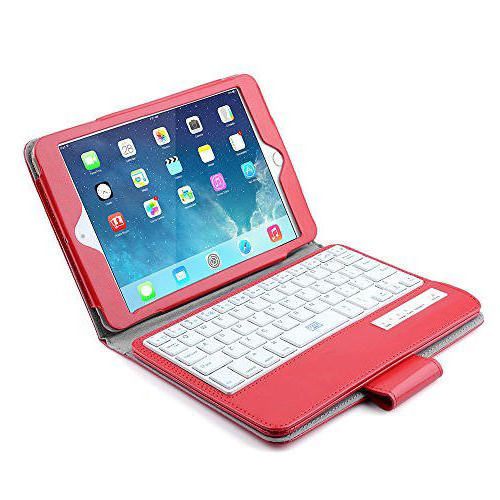
(Where’s the mouse??)
With the iPad Pro release, I’d hoped that Apple would finally relent and allow a mouse with iOS devices, but I assume an edict from Steve Jobs still precludes that. My daughter got me a cover with keypad similar to the photo at right. That and other Bluetooth keyboards seem to work well. I’ve tried Bluetooth mice and even bought a USB A 2.0 Female to Lightening B adapter when told that would enable mouse support, but it didn’t. I’m so used to using a mouse to select text to cut/copy/paste — trying to do equivalent actions with touch screen, track pad, stylus or keyboard just isn’t the same.
So I haven’t used the iPad nearly as much since getting the MacBook, mostly use it for watching “TV” and reading[2]. The few times that I’ve carried both at the same time, the combined bulk and weight have been enough to make me pause.
“Bottom line”, I enjoy the MacBook as much as I’ve enjoyed any machine. It is easy to carry — I take it me with in situations where I wouldn’t previously have taken my laptop or my iPad.
- Live Mail, in spite of its flaws, is my favorite mail handler. It is a little surprising that I think that. In the 90s and early 2000s, I’d switch back and forth between Netscape Mail and Outlook Express. I’ve never much liked Outlook, have barely used it for myself, just for helping others. In spite of the similar names, Outlook Express has had little substantive relationship with Outlook. With Vista, the name became Windows Mail, and there were significant improvements in what seemed like the Outlook Express code base. Then, with Windows 7, Microsoft stopped bundling Mail, seemingly abandoned the code they’d used in the past and came up with a seemingly new implementation of a free mail handler, Live Mail. The IMAP support in the initial (2010) version of Live Mail was barely acceptable. I started using Thunderbird as my primary mail handler for Windows 7. But with Windows 10, I gave Live Mail another chance and am glad I did. However, what I use now is the 2012 version which has been deprecated in favor of the less capable new Mail app associated with Windows 10. [update 10/19/16 – Live Mail to be abandoned as of 1/10/17, according to WinBeta.] So I can imagine going back to Thunderbird on Windows, and if I do, I may switch to Thunderbird on macOS.
- I really like the Mail app on iOS for browsing and reading mail. It seems much better than what I’m used to on Android. But without a mouse, manipulating mail, responding, etc. is more effort than on macOS or Windows.


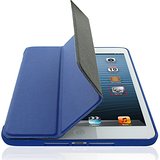
You must be logged in to post a comment.